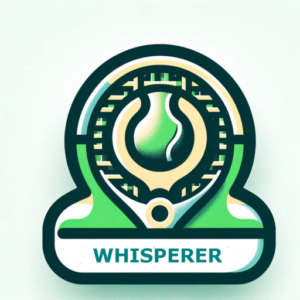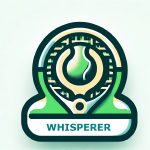Watch with Your Ears
Watch with Your Ears
How Ball Sound Sharpens Your Serve Focus
When it comes to serving at a high level, your ears are just as valuable as your eyes. Better players don’t just watch the ball—they listen to it. The sound of contact holds subtle timing cues that can elevate your visual focus, rhythm, and court awareness.
Let’s unpack how this works—and how to train it.
The Serve is a Visual-Rhythm Event—Anchored in Sound
Serving isn’t just a physical action—it’s a symphony of timing. Each element of the motion—toss, leg drive, shoulder rotation, swing path, and follow-through—has its own tempo. Like music, it flows best when each part hits in sync.
And nothing confirms that sync better than the sound of the ball off your strings.
A clean “pop” or “crack” signals ideal contact. But it’s more than feedback—it’s a cue your brain can train around. When your rhythm is dialed in, your body feels it, your eyes see it, and your ears hear it.
How Ball Sound Trains Visual Precision
Use the sound of the ball—yours and your opponent’s—to fine-tune your focus:
During Practice Serves
Listen to how your best serves sound. A clean “pop” often coincides with ideal timing and contact point. Use that auditory feedback to reinforce visual habits:
-
Was your head still?
-
Were your eyes on the contact zone?
-
Did you stay balanced through the hit?
Make it a rule: Don’t drop your head until you hear the sound of the ball leaving your strings. Most players peek early, and that tiny lapse disrupts both vision and body alignment. The sound becomes your cue to stay engaged and steady through contact.
When Returning Serve or Playing Points
Your opponent’s ball sound is a goldmine of real-time information. Before you even see the full flight, your ears can tell you:
-
Whether the contact was clean or off-center
-
If the ball was hit flat, sliced, or with heavy topspin
-
How much time you have to react
Train yourself to hear first, then see second. You’ll start picking up pace, spin, and intent faster than ever.
Build Better Match Awareness
In high-pressure moments, visual attention can get overwhelmed. But sound cuts through nerves like a scalpel.
Listening centers your awareness in the moment. It grounds you, calms your thoughts, and gives you real-time feedback you can trust—especially when your eyes or emotions might deceive you.
Great players pick up confidence, hesitation, or even nerves just from how the opponent’s ball sounds. Learn to do the same.
Key Takeaways
-
Keep your head up until you hear the ball: This simple cue reinforces balance, discipline, and timing through contact.
-
Listen to the pop: A crisp sound = clean contact. Train your ears to detect it and build your visual rhythm around it.
-
Use your ears to sync rhythm: Under pressure, when your eyes falter, let your hearing guide your timing.
-
Drill with intent: Incorporate sound awareness into serve practice. Don’t just swing—listen.




